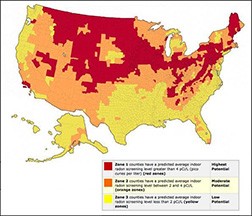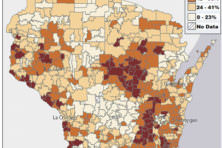Radon
- Share
- Tweet
- Pin
- Share

January is National Radon Action month. You can’t see it, smell it or taste it, but radon, a cancer-causing radioactive gas, could be in your home. Radon gas is a naturally occurring byproduct of the radioactive decay of uranium in the soil. The Surgeon General has declared that radon is the second leading cause of lung caner, right behind smoking cigarettes. Testing is the only way to determine if radon is in your environment. Even very high levels of radon can be reduced with relatively inexpensive radon reduction systems. For a radon testing kit, contact Jessica Wanserski of the Manitowoc County Health Dept., who oversees radon information for Brown, Calumet, Door, Kewaunee and Manitowoc counties, 920.683.4454, [email protected].
1.3
The average national radon level is 1.3 picocuries.
4
The U.S. Environmental Protection Agency has set an action level of 4 picocuries. At or above this level of radon, the EPA recommends you take corrective measures to reduce your exposure to radon gas.
5.8
The average indoor radon in Door County is 5.8 picocuries.
21,000
The estimated number of annual lung cancer deaths in the U.S. caused by radon exposure each year.
8 million
The number of homes the EPA estimates have elevated radon levels, or one of every five homes.
2 billion
The estimated annual cost in dollars of both direct and indirect health care costs from radon-induced lung cancer.
Source: Wisconsin Dept. of Health, epa.gov


